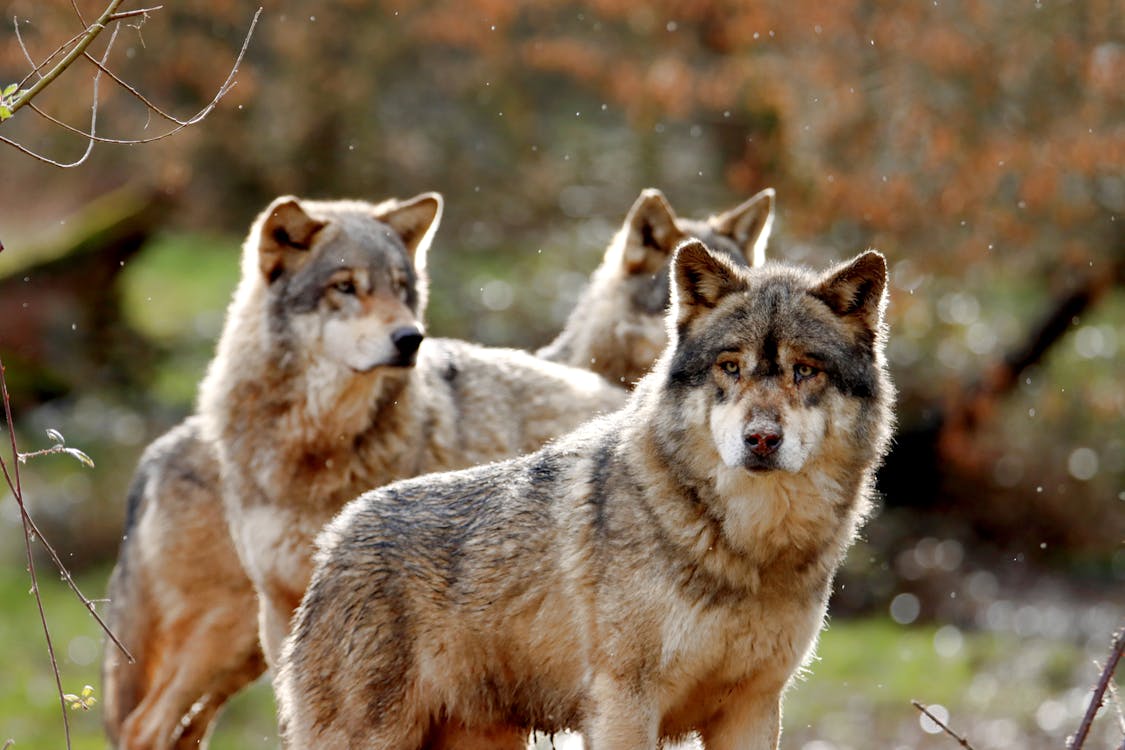Wolves are one of the most iconic and misunderstood animals in the world. Revered by many indigenous cultures and often demonized in popular myths, wolves play a critical role in maintaining the health and balance of ecosystems. However, human activity, habitat loss, and conflict with livestock farmers have put many wolf species at risk. Understanding the plight of these endangered wolves and learning how we can contribute to their conservation is essential to ensuring their survival.
Endangered Wolf Species Around the World
Several wolf species around the world are currently endangered due to a combination of human impacts and environmental changes. Let’s explore some of the most at-risk species.
1. Red Wolf (Canis rufus)
The red wolf, native to the southeastern United States, is one of the world’s most endangered wolves. Once declared extinct in the wild in the 1980s, conservation efforts brought this species back through captive breeding and reintroduction programs. Unfortunately, habitat loss and hybridization with coyotes have kept their numbers critically low. Today, fewer than 20 individuals are believed to live in the wild, with a slightly larger population in captivity.
2. Ethiopian Wolf (Canis simensis)
The Ethiopian wolf is Africa’s rarest canid and is found only in the highlands of Ethiopia. With fewer than 500 individuals left, they are considered critically endangered. Their habitat is threatened by agriculture and human encroachment, and diseases such as rabies, transmitted by domestic dogs, pose significant challenges. Despite being smaller than their North American cousins, Ethiopian wolves are exceptional hunters of small mammals, particularly rodents.
3. Iberian Wolf (Canis lupus signatus)
The Iberian wolf, a subspecies of the gray wolf, is native to Spain and Portugal. While not yet as critically endangered as some other wolf species, they are facing significant pressures. Their population is primarily limited to northern Spain, with fewer than 2,500 individuals remaining. Hunting, habitat destruction, and conflict with livestock farmers pose significant risks to their survival.
4. Himalayan Wolf (Canis lupus chanco)
The Himalayan wolf, a subspecies of the gray wolf found in the high-altitude regions of the Himalayas, is another at-risk population. The exact number of Himalayan wolves is not well documented, but estimates suggest fewer than 350 individuals remain. Poaching and habitat fragmentation are the main threats to this elusive predator.
5. Mexican Gray Wolf (Canis lupus baileyi)
The Mexican gray wolf, native to Mexico and parts of the southwestern United States, was once driven to near extinction. Thanks to dedicated conservation programs, their numbers have begun to recover, though the population remains small, with around 200 individuals in the wild. The Mexican gray wolf continues to face challenges such as illegal killings, limited genetic diversity, and conflicts with ranchers over livestock predation.
The Importance of Wolves to Ecosystems
Wolves are apex predators, which means they play a crucial role in maintaining the balance of their ecosystems. By controlling prey populations such as deer and elk, they help prevent overgrazing, which can lead to habitat degradation. This cascade effect, known as a trophic cascade, helps to maintain biodiversity and healthy ecosystems. In Yellowstone National Park, for example, the reintroduction of gray wolves in the 1990s helped restore vegetation and wildlife populations by reducing the overpopulation of herbivores.
Threats Facing Endangered Wolves
Endangered wolf species face multiple challenges, many of which stem from human activities:
- Habitat Loss and Fragmentation: As human populations expand, natural habitats are converted into agricultural land or urban areas, leaving wolves with less territory to hunt and breed.
- Conflict with Livestock: In regions where wolves prey on livestock, they are often targeted by farmers or ranchers in retaliation. Illegal killings, even in protected areas, remain a significant problem.
- Climate Change: Changes in climate can disrupt the availability of prey and suitable habitats for wolves, particularly in high-altitude or arctic regions.
- Diseases: Wolves are susceptible to diseases transmitted by domestic animals, such as rabies and canine distemper, which can spread rapidly in wild populations.
How We Can Help Save Endangered Wolves
Conservation efforts for wolves around the world are multi-faceted and require coordinated action from governments, organizations, and individuals alike. Here are some key strategies for helping to protect endangered wolves:
1. Support Conservation Programs
Many organizations are working tirelessly to conserve endangered wolf populations through breeding programs, habitat restoration, and anti-poaching measures. Donating to or volunteering with groups like the International Wolf Center, the Wolf Conservation Center, or regional organizations can help provide the resources needed to protect these animals.
2. Promote Coexistence with Livestock
In areas where wolf-livestock conflict is common, promoting coexistence is essential. This can include the use of non-lethal deterrents, such as electric fencing or guard animals, to protect livestock. Educating farmers about ways to coexist with wolves can reduce retaliatory killings and build community support for wolf conservation.
3. Support Legal Protections
Advocating for stronger legal protections for wolves can help safeguard their habitats and ensure that populations are allowed to recover. This includes supporting the enforcement of anti-poaching laws and lobbying for the protection of critical habitats.
4. Spread Awareness
Raising awareness about the importance of wolves and the threats they face can help shift public perceptions. Wolves are often misunderstood and vilified due to cultural myths and fears. By spreading accurate information and supporting educational programs, we can help reduce fear and promote conservation-friendly attitudes.
5. Preserve Habitats
Habitat preservation is key to ensuring the survival of endangered wolves. Supporting initiatives to create and maintain wildlife corridors, national parks, and protected areas allows wolves and other wildlife to thrive.
Conclusion
Wolves, as apex predators, are essential to the health of many ecosystems worldwide. However, human activities, from habitat destruction to hunting, have pushed several species to the brink of extinction. By supporting conservation efforts, promoting coexistence with livestock, and raising awareness, we can help protect these magnificent creatures for future generations. With concerted global action, we can ensure that wolves continue to roam the wild landscapes of our planet, maintaining the ecological balance that benefits all species, including humans.

